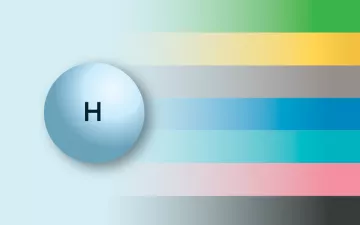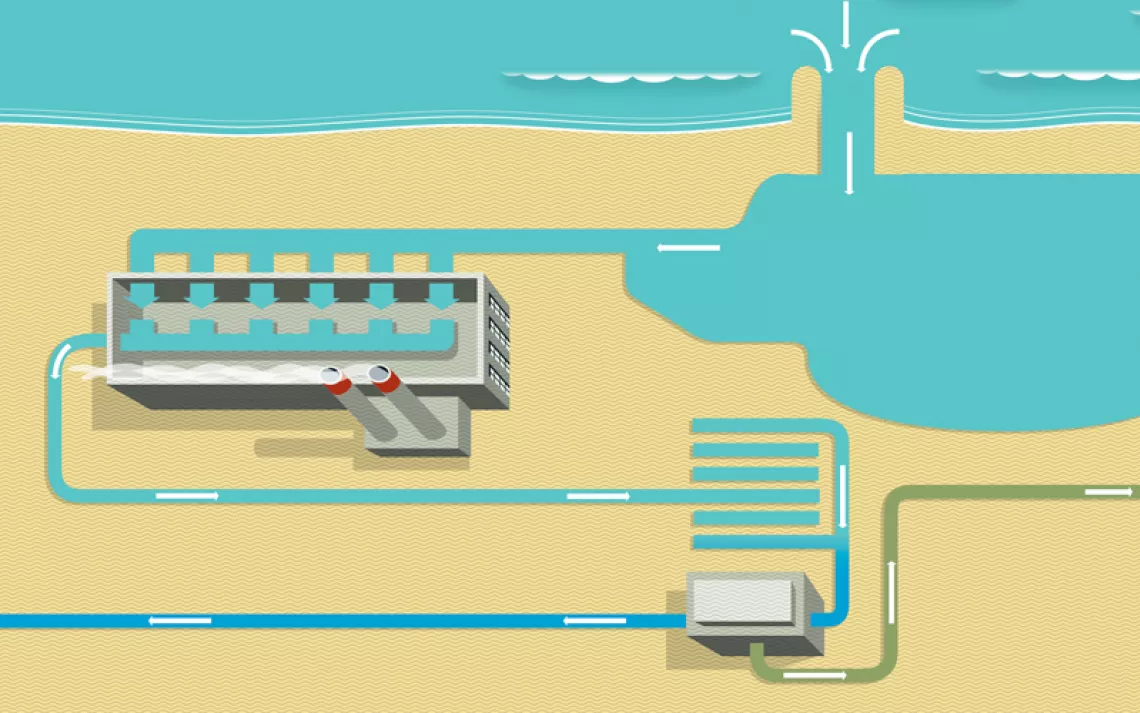The Hydrogen Rainbow, Explained
Hydrogen itself is a nice, clean fuel—how it's made can be the problem

When people get excited about hydrogen (and there are a lot of hydrogen boosters these days), they usually mention the lack of carbon emissions. Only water vapor and warm air are released when pure hydrogen combusts in a fuel cell. Now hydrogen technologies promising this dream exhaust have attracted federal support. In 2021, the Infrastructure Investment and Jobs Act set aside $8 billion for projects demonstrating low-carbon hydrogen production, storage, transportation, and consumption. The Inflation Reduction Act of 2022 provided additional tax credits for hydrogen.
Is there a catch? Of course there's a catch. Hydrogen is the most abundant element in the universe, but it's almost always combined with other molecules, and separating them is a doozy. Refining hydrogen uses a lot of energy. Also, while it can be produced from water, most hydrogen is currently refined from methane. Unless more renewables are developed to meet additional demand, scaling up hydrogen production could ultimately increase emissions. Done wrong, by the time it gets to the fuel cells of a supposedly low-emission vehicle, "clean hydrogen" can be anything but.
How carbon-intensive are the different methods for refining hydrogen? As a shorthand, energy wonks use colors to describe the processes—some clean, many less so. Here's a guide to the hydrogen rainbow.

Green hydrogen means electricity from renewable sources is used to split water into hydrogen and oxygen (H₂O, right?). The process is 20 to 40 percent less efficient than using the renewable energy directly, so it's sustainable only when using electricity that would otherwise be wasted. Caveat: As with the terms sustainable and carbon capture, green hydrogen has no legal definition. That makes this process a possible target for the greenwashing of environmentally dubious energy sources, like biomass.

Yellow hydrogen means the same thing as green hydrogen but produced with solar power. Or it will be produced with solar power (it's still in the research and development stage).

Gray hydrogen refers to the process of superheated steam breaking down methane (CH₄) into carbon dioxide and hydrogen. Ninety-five percent of the 10 million metric tons of hydrogen currently manufactured in the United States is made this way. About 60 percent is used for oil refining, 30 percent to make ammonia for fertilizer, and the rest for miscellaneous fuels and chemicals. For every kilo of gray hydrogen produced, nine kilos of carbon dioxide are released into the atmosphere.

Blue hydrogen means the same thing as gray hydrogen, but in this process, instead of being released, the carbon dioxide is captured and stored. As with all carbon capture and sequestration projects, what happens to that carbon after its capture is crucial to any environmental cred. In the United States, it is most commonly pumped into oil fields to force out more oil and gas.

Turquoise hydrogen also means the same thing as gray hydrogen, but the process uses methane pyrolysis—a new technique, yet to be proved at scale, that splits methane into hydrogen and CO₂ in a way that takes less energy than using steam.

Pink hydrogen (sometimes called purple hydrogen or red hydrogen) refers to any form of hydrogen production using a nuclear energy source.

Black hydrogen (sometimes called brown hydrogen) bears the dubious honor of being the absolute least sustainable form of hydrogen out there. It results when black coal or brown coal (a.k.a. lignite) is used to release hydrogen and/or heat the steam in hydrogen manufacturing.
 The Magazine of The Sierra Club
The Magazine of The Sierra Club



